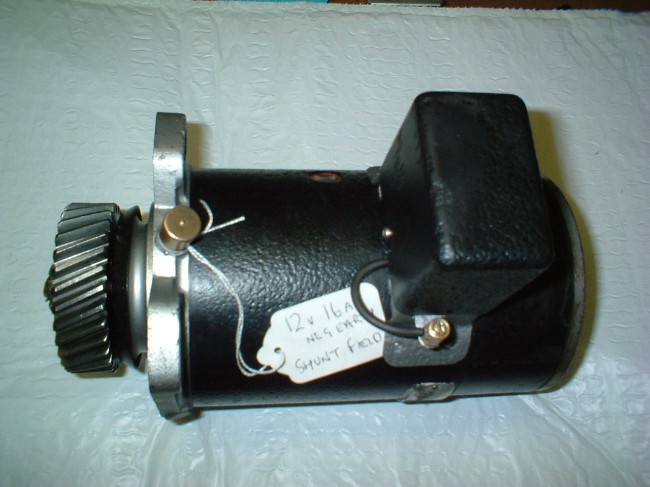2 Brush Conversions for 3 Brush Dynamos

The large picture above shows a 1930's CAV 3 brush 6 volt dynamo from a tractor. It has been converted by us to a 12 volt 2 brush machine. Inside the original cut out case is an electronic regulator.
As you can see, the whole thing looks exactly as original.
All our 2 brush conversions can easily be converted back to 3 brush at any time.
Three brush dynamos were found on most bikes and cars throughout the 20's and 30's and on some of the cheaper models until around 1950.
Let me explain.
A 3 brush system generally *(see below) has 2 fixed rates of charge - high or low, sometimes refered to as full or half, H and L or summer and winter on the vehicles light/charge switch.
Basically a smaller 3rd brush controls the flow of current to the field coils in the dynamo via a resistance or sometimes two resistances, this in turn controls the output voltage of the dynamo. If you don't use the vehicle at night you run about with the switch in the low, half or summer position giving the battery a 2-3 amp charge if it needs it or not. If you use the vehicle at night or for much stop starting of the engine you run about with the switch in the high, full or winter position giving the battery around 8-9 amps of charge, again, if it needs it or not. When side lights are switched on it switches in the low charge (high resistance) resistor. When headlamps are on it in turn, switches in the high charge (low resistance) resistor to supply more current to the battery.
*Some cars such as early Austin Sevens, Twelves and all Ford Eight and Ten models to 1953 had no split charge facility so the battery gets full dynamo output at all times. Some had a Dynamo switch which enabled the driver to turn the dynamo on and off but the battery still get around an 8a charge which is too high *
The cutout side of things, that is the switch between the dynamo and the battery, is controlled by a solenoid operated set of points that use valuable current rather than allowing it to be used to run the vehicles lights/accessories.
As can be seen it is a very basic method of battery charging. 2 fixed rates and the poor battery gets a charge even when it's full.
A 2 brush dynamo has just 2 brushes
All 3 brush dynamo's can be converted to work as a 2 brush unit.
A 2 brush unit supplied its current to the battery via what is known as a "mechanical CVC" (compensated voltage control). This unit deals with cutting the dynamo to battery connection and regulating the current available, by two solenoid operated "switches" that once again, use valuable current that could be being used to power lights and accessories. Anything that relies on mechanical components, will eventually wear and just like the contact breaker points in the vehicles ignition system, the CVC's switching "points" wear too leading to poor performance and even more current being wasted. That's why you find yourself taking the lid off your CVC and pushing the points closed by hand sometimes, normally at night.
Some say just "doesn't just earthing the field on a 3 brush dynamo make a 2 brush dynamo?" Yes it does but it will have no efficiency and the field current will be very high causing burning of the regulator points. That's why we call our 2 brush conversions "PROPER" conversions because we wind new fields to make an efficient 2 brush conversion.
See seperate section that deals with mechanical CVC's.
The best thing you can do now is to connect it to a modern Solid State regulator......
(click here)